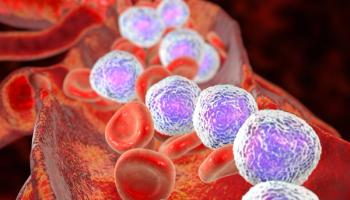
Hydroxycarbamide Therapy Shown to Improve Memory, IQ of Adolescents With Sickle Cell Disease
In adolescent patients with sickle cell disease, hydroxycarbamide therapy was associated with improvements in neurocognition variables such as working memory, verbal memory, and nonverbal IQ, according to study findings.
In adolescent patients with sickle cell disease (SCD), hydroxycarbamide therapy was associated with improvements in neurocognition variables such as working memory, verbal memory, and nonverbal IQ, according to study findings published in the British Journal of Haematology.
Patients with SCD are at an increased risk for developing neurocognitive deficits, which can cause significant cerebral damage. Hydroxycarbamide therapy, an oral medication that causes changes in the blood, has been shown to benefit patients with SCD by
As researchers note, the efficacy of hydroxycarbamide therapy in adolescents has not been systematically investigated. In a prior study, children with SCD were shown to be at an
Researchers screened the neurocognitive functioning in 103 adolescents with SCD (16-17 years, 50% female) and compared outcomes between patients with a history of exposure to hydroxycarbamide (n = 12, HbSC/HbSβ+ thalassaemia; n = 52, HbSS/HbSβ0 thalassaemia) and those never treated with hydroxycarbamide (n = 31, HbSC/HbSβ+ thalassaemia; n = 8, HbSS/HbSβ0 thalassaemia). Demographic distributions of the participants were similar between both groups.
After adjusting for socioeconomic status, study results showed that those with history of hydroxycarbamide therapy had significantly higher scores on nonverbal IQ (HbSC/HbSβ thalassaemia: P = .036; effect size [d] = 0.65), reaction speed (HbSS/HbSβ0 thalassaemia: P = .002; d = 1.70), and sustained attention (HbSS/HbSβ0 thalassaemia: P = .014; d = 1.30) compared with those who did not receive hydroxycarbamide.
These benefits were additionally attributed to improvements in working memory (HbSC/HbSβ+ thalassaemia: P = .034; d = 0.71) and verbal memory (HbSC/HbSβ+ thalassaemia: P = .038; d = 0.84) for those undergoing hydroxycarbamide therapy compared with those who did not.
In patients with HbSS/HbSβ0 thalassaemia, longer treatment duration was linked with better verbal memory (P = .009) and reading (P = .002), with markers of hydroxycarbamide effect, including higher fetal haemoglobin (HbF), higher mean corpuscular volume (MCV), and lower white blood cell count (WBC) also associated with better verbal fluency (HbF: P = .014; MCV: P = .006; WBC: P = .047) and reading (MCV: P = .021; WBC: P = .037).
As adolescents with SCD face a significant risk of developing neurocognitive deficits, exposure to hydroxycarbamide can assist in mitigating these issues, noted the researchers.
“Additionally, we showed that impairment [exists] across neurocognitive domains, and screening for deficits is thus necessary to identify patients who need further evaluation or intervention,”
Reference
Partanen M, Kang G, Wang WC, et al. Association between hydroxycarbamide exposure and neurocognitive function in adolescents with sickle cell disease [published online February 26, 2020]. EJHaem. doi: 10.1111/bjh.16519.
Newsletter
Stay ahead of policy, cost, and value—subscribe to AJMC for expert insights at the intersection of clinical care and health economics.













































